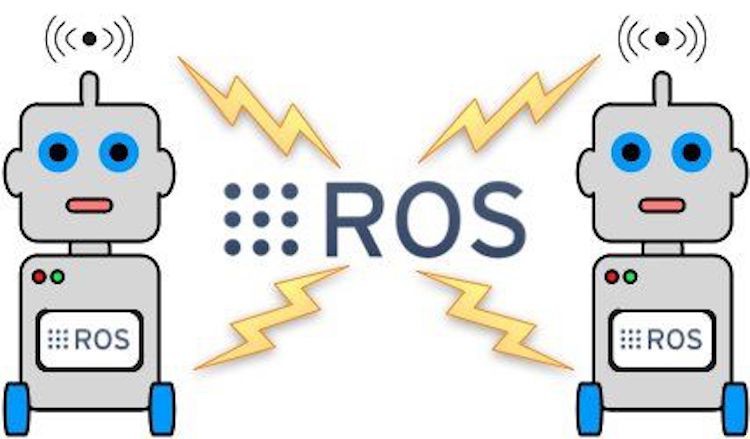What is ROS (Robot Operating System)?

The "Robot Operating System" is something that everyone in the robotics industry should know, even if it isn't (technically) an operating system. This revolutionary piece of "middleware" contains everything that developers need to get robotics projects up and going, collecting all of the frameworks critical for success into one place and allowing for seamless work and integration. In the robotics world, it's as influential as Windows (which had its own robotic operating system, MSRDS), MS-DOS, Linux or any of the other fabled operating systems that launched the personal computing revolution that changed the world.
However, casual robotics fans or those who are somewhat aligned in the industry might not know anything about the Robot Operating System or how it revolutionized it. Here, we'll take a deep dive into the Robot Operating System, looking at what it is, where it came from and how it's preparing the globe for a robot-packed future.
The Beginnings of the Robot Operating System
Like most change-the-world projects, the ROS comes out of a huge, glaring need. Years ago, in the technology mecca of Stanford University, two Ph. D. students named Keenan Wyrobek and Eric Berger prepared to start their robotics-focused theses projects. They noticed a glaring need in the industry: the pains that came with robotics software. There was a lot of writing and re-writing code just to get to the test phases without any real focus on creativity and development. In essence, there was a lot of momentum, inspiration and innovation out there wasted on the mind-numbing work of picking through the subscriber and publisher work, getting programs to talk to each other and creating a common distributed architecture.
The two called their pitch the "Stanford Personal Robotics Program" and embarked on an ambitious development and funding project: creating ten identical robots across 10 different universities and working with software engineers to build the software that would allow robotics innovators to build and create, as they called it, "the Linux of robots." Their first funders included Joanna Hoffmann (the Apple figure memorably played by an Oscar-nominated Kate Winslet in "Steve Jobs") and they eventually gained a foothold in the industry with their prototype "PR1" (Personal Robot One) to show off to funders.
The PR1–and the company's ambitions–caught the eye of Scott Hassan of the robotics incubator called "Willow Garage" in Silicon Valley, and the two ROS founders started to work on the project there. They eventually developed the sequel to the PR1 (the Personal Robot Two or PR2) and delivered 10 PR2 robots to different institutions. Eventually, they brought out the first ROS for public and commercial use in 2010.
In 2013, the nonprofit Open Robotics took over the distribution of the ROS; it continues to run ROS to this day, with many high-profile organizations and institutions around the globe utilizing the "operating system" to power their robot initiatives.
What Does ROS Look Like Today?
At present, ROS operates through updates on its website. Most of the main elements of ROS are open source, but there are licenses for other aspects of ROS. It's highly customizable for the user, allowing them to bring in and master whatever tools and hardware they need to run different aspects of their robotics program at every stage. The ROS architecture simply helps these programs communicate and interact with each other through ROS processes represented as a node series.
There are a host of other features included within the ROS as well, including:
- Several specific tools including rviz, catkin, rosbash and rosbag to help smooth and streamline development
- Open-source packages for functionality and algorithms, including cartographer from Google, tf2 for frame representation, nodelet for multiple algorithms and the gazebo package for the powerful robotics simulator Gazebo (formerly part of the free-software Player project)
- Continual updates with new versions, with the latest (Galactic Geochelone) released on May 2021 and new release scheduled for the next two years.
Famous Users of ROS
As one of the pre-eminent technologies in the robotics industry, ROS is used throughout on some of the more high-profile robots on the market, including:
- The Jackal "unmanned ground vehicle" from Clearpath Robots
- The TALOS robot, "the humanoid robot that integrates the latest cutting-edge robotics technology" from PAL Robotics
- The Shadow Smart Grasping system from Shadow Robot, based out of London
That's only a handful of ROS users on the market! Through innovation and continued development, ROS keeps changing the world and propelling robotics forward. Who knows what future creations it will power?
Thanks for helping to keep our community civil!
Notify staff privately
You flagged this as spam. Undo flag.Flag Post
It's Spam
This post is an advertisement, or vandalism. It is not useful or relevant to the current topic.
This post is an advertisement, or vandalism. It is not useful or relevant to the current topic.
You flagged this as spam. Undo flag.Flag Post


